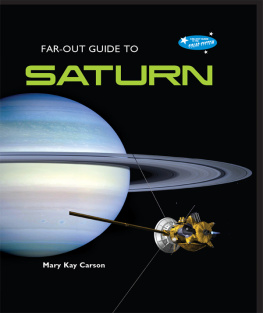
Images of Modern America
SATURN V
ROCKET

This unusual crew photograph shows the Apollo 8 backup crew of, from left to right, Neil Armstrong, Buzz Aldrin, and Fred Haise on December 10, 1968, in front of the SA-503 Apollo 8 Saturn V and the target, the moon. (KSC-68C-8008. Kipp Teague.)
FRONT COVER: The launch of Apollo 14 on January 31, 1971. (AS14-71PC-152. J.L. Pickering.)
UPPER BACK COVER: The launch of Apollo 15 on July 26, 1971. (AS15-71HC-1107. J.L. Pickering.);
LOWER BACK COVER: (from left to right) Apollo 11 first stage on the Pearl River barge on August 29, 1968 (68-69295. NASA.), Dr. Wernher von Braun (left) and Dr. Kurt Debus (right) at the roll out of the SA-500F Saturn V on May 25, 1966 (KSC-66PC-110. Kipp Teague.), F-1 engines being installed in the S-IC-T stage on March 30, 1965 (65-21876. NASA.)
Images of Modern America
SATURN V
ROCKET
ALAN LAWRIE
FOREWORD BY ED STEWART II, INTRODUCTION BY MIKE JETZER

Copyright 2016 by Alan Lawrie
ISBN 978-1-4671-2387-7
Ebook ISBN 9781439658628
Published by Arcadia Publishing
Charleston, South Carolina
Library of Congress Control Number: 2016934548
For all general information, please contact Arcadia Publishing:
Telephone 843-853-2070
Fax 843-853-0044
E-mail
For customer service and orders:
Toll-Free 1-888-313-2665
Visit us on the Internet at www.arcadiapublishing.com

This book is dedicated to my great-grandfather Cecil Robert Hillman, who was a talented British mechanical engineer. He was born on January 18, 1868, at 28 Strada Rinella, Cottonera, Malta, and died on March 31, 1943, at Rua Maestro Chiafarelli 386, Sao Paulo, Brazil. He immigrated to Brazil on March 20, 1896, and became chief mechanical engineer of the Sao Paulo Railway. In his spare time, he produced the first planisphere of the southern hemisphere and wrote books on astronomy and general relativity. (Authors collection.)
CONTENTS
ACKNOWLEDGMENTS
After the caption for each photograph I have added the official photograph number if one exists. I have also added the source(s) for each photograph. I gratefully acknowledge the support of the following people who contributed to this book.
Arlene Royer of the National Archive and Records Administration in Atlanta scanned and provided photographs from the original negatives held at NARA.
Mike Jetzer (heroicrelics.org) from Wisconsin wrote the introduction to this book and proofread all of my captions. He also provided various video capture images. In addition, Mike is now the host of the collection of Douglas Aircraft Company photographs, previously located on Phil Broads cloudster website, which originally came from the Santa Monica Museum of Flight.
Ed Stewart II, director of exhibits and curation at the US Space & Rocket Center in Huntsville, wrote the foreword.
J.L. Pickering, president of Retro Space Images, provided most of the photographs in . Kipp Teague from the Project Apollo Archive provided a number of images, as did Jim Porter, Dick Serrano, Terri Pennello, Vince Wheelock, Doug Galloway, Dieter Zube, Tom Usciak, and Andy Clark.
David Concannon and Geoff Nunn were involved with the recovery and display of the recovered F-1 engine parts.
Special thanks to Dr. David Baker, whose Apollo and Saturn articles in the 1970s Spaceflight magazines inspired this teenage space enthusiast.
Jeff Ruetsche and Liz Gurley provided wonderful support for this book at Arcadia Publishing.
To Olwyn Lawrie, all my love.
All author proceeds from the sale of this book will go to the US Space & Rocket Center in Huntsville.
Alan Lawrie
Hitchin, England
March 2016
FOREWORD
The Saturn V is, in the mind of the layman, associated with Cape Canaveral. The mighty Apollo launch vehicle was truly a product of several states, with Florida and the cape being only the most public portion of its lifecycle. Rarely do people realize that California, Florida, Missouri, Alabama, and more were involved.
The Saturn V is, at heart, a rocket from the southeastern United States. Developed largely at Marshall Space Flight Center (MSFC) in Huntsville, Alabama, it is part of a legacy of technology that is unexpected in the Deep South. The design of the rocket was overseen by Dr. Wernher von Braun, who was part of the Operation Paperclip scientist group and the developer of the V-2 missile. Dr. von Braun refined the concept throughout his time working for the Army Ballistic Missile Agency (ABMA) at Redstone Arsenal. When he was appointed as the director of the newly formed National Aeronautics and Space Administration (NASA) Marshall Space Flight Center in 1960, work on the rocket began in earnest. Evolving the Saturn designs from the Redstone and Jupiter technologies, von Braun took President Kennedys lunar mandate and built the most powerful launch vehicle ever flown.
The Army and ABMA helped edge what used to be known as the Watercress Capital of the World into new technology. But it wasnt until the Saturn V began to take shape that the city saw what would become a permanent change. Huntsville saw contractors from all over the country converge in areas surrounding Marshall and the arsenal. The Saturn V brought companies like Boeing, IBM, Lockheed, Northrop, and more. Cummings Research Park was formed to accommodate these companies and the new local ventures that formed to support the program. Now Cummings Research Park houses companies serving defense, aerospace, software development, and even the biotechnology industries. It is second in size only to Research Triangle Park in North Carolina.
The Saturn and its challenges also helped establish the University of Alabama in Huntsville. It was founded to support the education and training needs of the growing local aerospace industry. It provided opportunities for local students to learn these fields and then secure jobs at home. Renowned for its programs in engineering, it has grown to include atmospheric science, materials science, and more.
Above all, the Saturn V changed the culture of Huntsville. Along with von Brauns German team, people from all over the United States and with diverse cultural backgrounds came to work on the rocket. Most importantly, many stayed after the Apollo program ended. These people helped establish the Huntsville Museum of Art, the Huntsville Symphony Orchestra, the US Space & Rocket Center (USSRC), and Space Camp.
Huntsville built the rocket that put humans on the moon and a mark in history. But the Saturn V had a profound effect on its hometown. The museums, the wildly varied food scene, and the diverse population are the cultural offspring of the Saturn V and truly make Huntsville, in every sense of the phrase, The Rocket City.
Ed Stewart II
Director of Exhibits & Curation
US Space & Rocket Center
Huntsville, Alabama
INTRODUCTION
I write this from my home in a suburb of Milwaukee, Wisconsin, a city that played a vital role in producing and launching the Saturn V.
Some people may know that Boeing produced the S-IC (first) stage at the Michoud Assembly Facility (MAF) in New Orleans; North American Aviation (NAA) manufactured S-II (second) stages in Seal Beach, California; Douglas Aircraft Corporation (DAC) fabricated the S-IVB (third) stage in Huntington Beach, California; Rocketdyne produced the F-1 and J-2 rocket engines in Canoga Park, California; and that Huntsville, Alabama, was the home of both the Marshall Space Flight Center (MSFC) (which oversaw the entire rocket-building enterprise) and the IBM facility that manufactured the Instrument Unit (IU).
Next page













